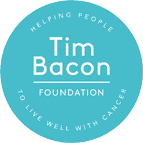Inorganic chaperones fused to fungal derived chemotherapies for the treatment of neuroblastoma
Neuroblastoma is a specialised nervous system cancer and accounts for 10% of childhood cancer cases and an astonishing 15% of cancer deaths in children treatment including surgery and chemotherapy, but the expected outcome is poor with a 50% fatality rate in children diagnosed aged one or above.
Astonishingly an airborne mould called ‘Aspergillus’ found in our environment and the air we breathe may hold the key in the fight against this devastating childhood cancer. This mould not only makes antibiotics, but also drugs that kill cancers. The ability of mould to kill childhood cancers such as neuroblastoma has not been investigated. A major issue in current chemotherapies is the ability of targeted delivery to the site where cancer is growing. In the fight against cancer, chemistry experts are developing ‘nanotechnology’ which describes minuscule molecules, which help get the drug to the site where cancer is flourishing.
At the University of Salford, we intend to bring together the drugs derived from mould and a special type of nanotechnology called ‘metal organic frameworks (MOFs)’. These MOFs can be likened to a chemical chaperone, which encase the active drug and protect it until it reaches the site where it is required. This method of drug design not only reduces side effects but also promises to enhance treatment efficacy.

